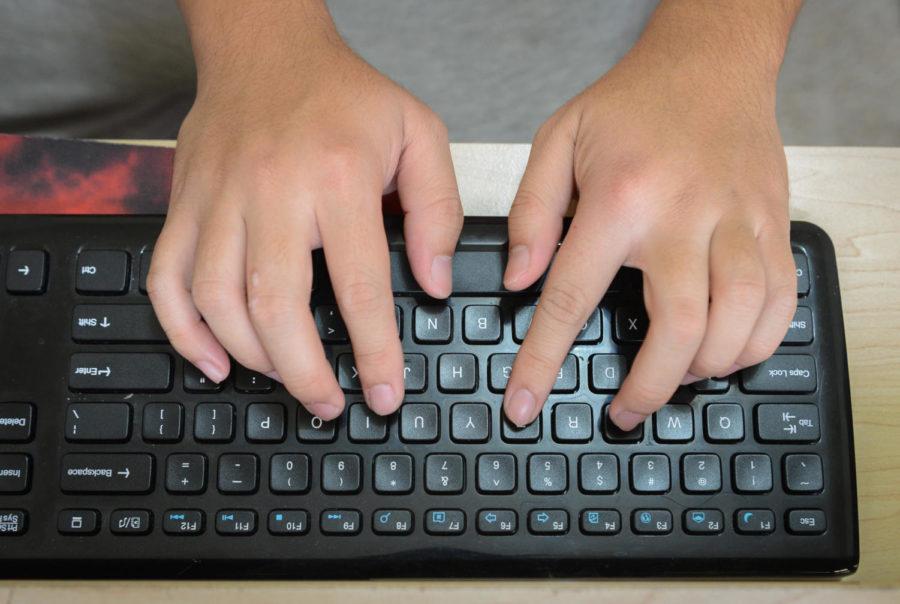ISU researchers explore typing patterns as new security for computers
Illustration: Jen Hao Wong/Iowa State Daily
Typing is one of an individual’s biometrics that stays with them and others cannot steal from them. ISU researchers are exploring ways of providing security through computer typing habits.
December 3, 2013
Researchers at Iowa State have begun to develop a new security technology that detects typing behavior of users to make certain they are not impostors.
This project, started in May 2012, is overseen by Morris Chang, associate professor of electrical and computer engineering.
“I have been interested in computer security for a while,” Chang said.
The idea of this technology is to monitor the user in the background, but be invisible to the user.
The traditional security authentication requires an initial login, and then assumes that the same person is the user throughout the session.
“This is not good enough, because what if the session had been hijacked by an impostor?” Chang said.
This technology, besides being beneficial for security reasons, is a software meaning it will not require any external hardware.
There are a lot of variables in the typing behavior of a person, Chang said.
Typing speed is very hard to be followed. Each individual has his or her own typing behaviors.
The researches came up with some strategies and engaged a large-scale experiment across campus.
There were four experiments, each of which lasted 30 minutes, gathering data about the individuals’ typing behaviors.
These experiments were used to verify the researchers’ strategies in advancing the technology.
Individuals have biometrics, something that stays with them that others cannot steal from them, Chang said.
The most common biometric is the fingerprint, but measuring the fingerprint requires external hardware.
The goal for this technology is to be invisible to the user, a low-cost software that is more beneficial than something that requires external hardware and software that is very fast Chang said.
So far, this research has successfully undergone its first year proving its accuracies and is ready to move on to its second year. The second year is focused on mobile phones and the computer mouse.
Minghung Shih, graduate research assistant for electrical and computer engineering, joined the research process in September 2013. Shih is in charge of the second phase of the project, which focuses on the computer mouse. The second phase of research focuses on users’ behaviors with the mouse.
“It captures several features like the speed you move the mouse and the curve,” Shih said.
The researchers also want to combine mouse behavior with Web browsing, which means they assume that when users are operating a website that they are familiar with, their behaviors are different than those websites that they are not familiar with.
The team is currently in the process of designing experiments for the second year.
These surveys will once again be taken on campus, and they are very critical for the outcome of the research on this technology, the research team members say.







